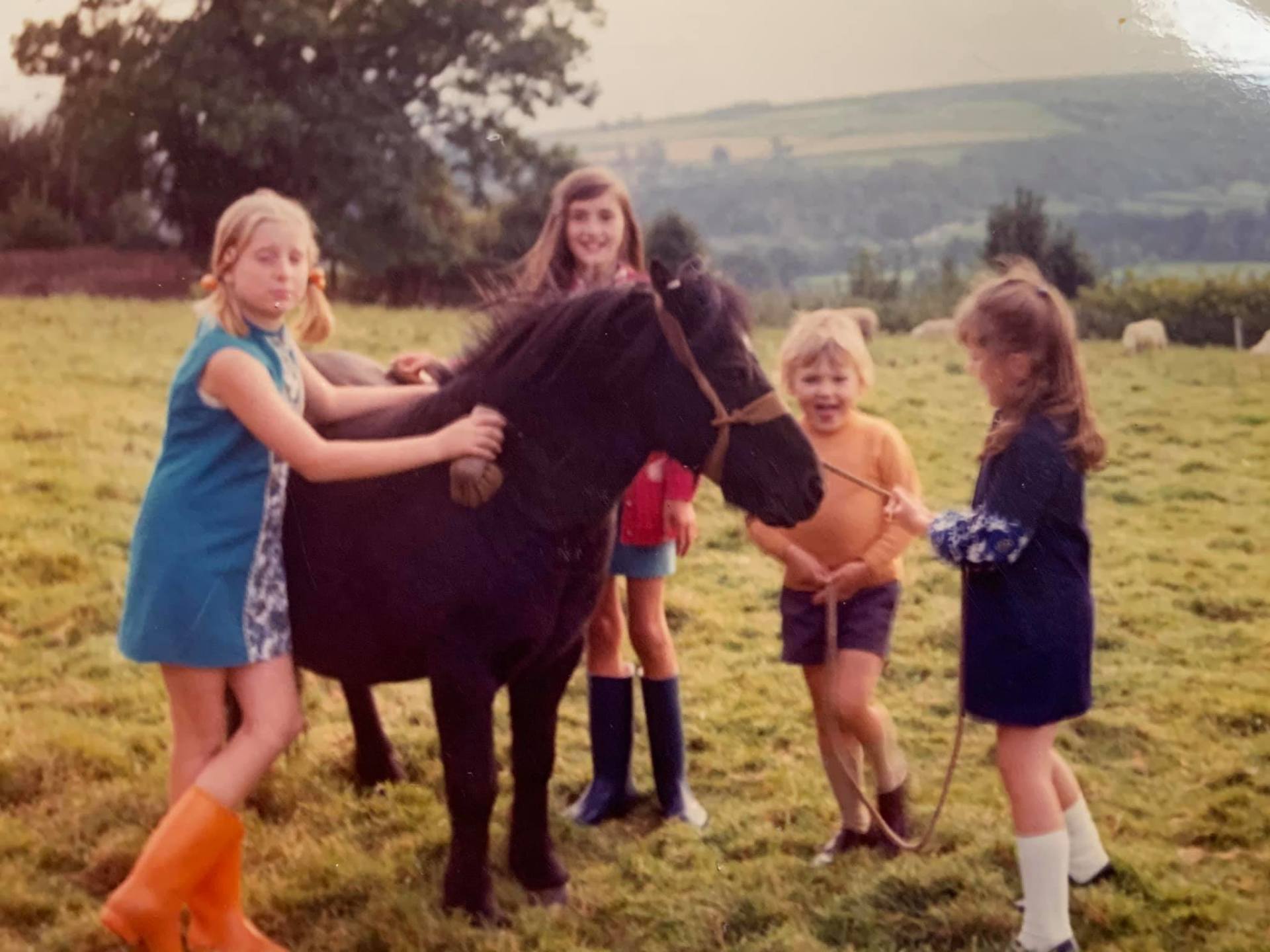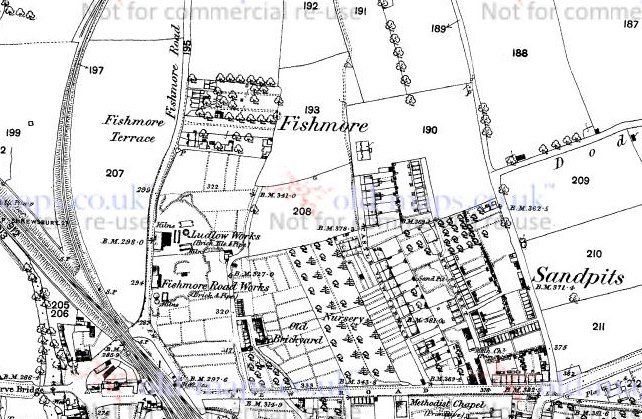We would love to hear from anyone who knows about the history of the meadow and start to build a simple archive of local memories around this much loved community amenity. Please send us your old photos and tell us your stories on Facebook or by email to this address: info@savethemeadow.co.uk
The meadow can be seen on this map from 1884 where it is described as a 'nursery': https://maps.nls.uk/view/101595430
And in the later map (shown below) - date not known yet - it's no longer called a nursery but is still a lovely open space among many other spaces that are long gone...
A Brief History of Castle View Terrace, Ludlow.
In the mid 19th century Ludlow was very much as it had been since medieval times. Many very grand houses for the wealthy and poor quality housing stock for the lower classes. Some were living in the type of abject poverty which would shock us today and in very crowded conditions. Large families lived in perhaps two rooms with no water or sanitation, a situation which sadly carried on well into the 20th century.
The town of Ludlow was also very crowded with no space for new dwellings to house the growing population. This changed with the building of new suburbs in areas such as East Hamlet where Castle View Terrace and the “little field” now lie.
The area had been part of the ancient Stanton Lacy Parish. A workhouse was opened there in 1839 to care for the homeless poor and the elderly who were unable care for themselves and over the next decades much building went on in the district.
Much of the construction was down to one man, Benjamin Weale, a devout Primitive Methodist who had moved to Ludlow in about 1870 at the age of twenty five. The 1871 Census describes him as a builder and timber merchant and by the time of the next Census, in 1881, he had not only built himself a large house in New Street, the street which lies behind Castle View Terrace, and had seven children and three servants, but also had a workforce employed in the building of several roads of dwellings in East Hamlet.
According to our deeds, the land on which the far end of Castle View Terrace was built was sold to Benjamin Weale by Lord Boyne around 1880. By 1881 the estate was nearly complete. New Street, Chapel Row and Dodmore Lane were built and only six houses remained unfinished in Castle View Terrace.
The houses he built would not have had electricity and would have been lit by gas and had privies at the bottom of the garden. The houses in New Street, which mainly housed tradesmen, each had their own privy and a wash house, a vast improvement in comparison with the conditions in which some other Ludlow residents lived.
The Terrace today remains much as it was then with the majority of the houses built along one side of the road with views of Ludlow Castle, Bringewood Chase and the hills in the distance. The Terrace proved popular with retired and professional people. A retired school inspector, an architect, a retired Congregational minister and a Borough Engineer were amongst the early residents as well as members of Weale's family. Benjamin's son William lived at number 20 in 1901 and another son John lived at Number 17 in 1911. His widow was still living there at the outbreak of the Second World War.
Benjamin Weale was also responsible for the building of a Primitive Methodist chapel in New Street, for which he donated the land and the bricks for construction, and was the builder and a Trustee for a larger one in New Road. His name and those of some of his family can be seen on the foundation stones on the front of Zion Chapel in New Road which has now been converted into four dwellings. He also built chapels locally in Knowbury and Upper Hayton and was known as a fine preacher. Weale was also an Alderman and became Mayor of Ludlow in 1905/6. It is said he was known as the “King of East Hamlet”.
Many of the properties remained in the ownership of Weale and were rented out but gradually sold off both before his death in 1920 and afterwards by his family. One house in Castle View Terrace still remains in the possession of one of his descendants and although it is now rented out, and not lived in by the family, his grand-daughter Kathleen Weale lived in it until her death in 1994. Another relative currently also lives in the Terrace.
Benjamin Weale's great-great-grandson was, until recently, the owner of the meadow where Shropshire Homes now plan to build.
I am grateful for all the work Christopher Train of the Ludlow Historical Research Group contributed to the book “Victorian Ludlow”. Mr Train sadly died in 2007. Derek Beattie who wrote “How The Other Half Lived” is also a member of the group. I have learned so much of interest about Ludlow from both books. I found the information on the Primitive Methodist Chapels on a website written by Janice Cox and the information on Benjamin Weale's religious beliefs and his outdoor preaching on the Primitive Methodist website www.myprimitivemethodistsorg.uk
I have also used Ancestry UK to source the information on the Censuses and the various people who have lived in Castle View Terrace over the last one hundred and forty years.
Sue Stedman, Castle View Terrace resident
All Rights Reserved | Savethemeadow.co.uk




